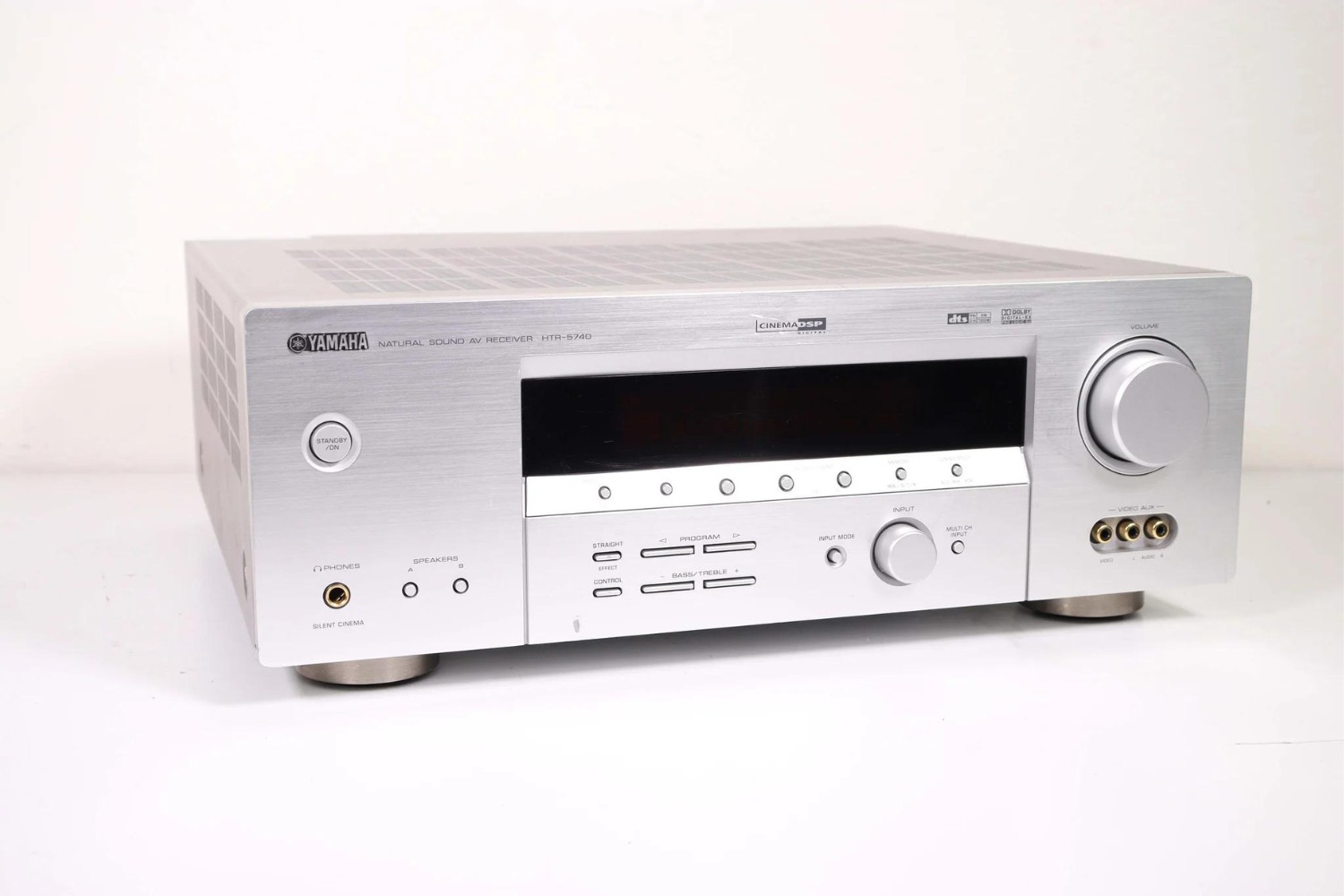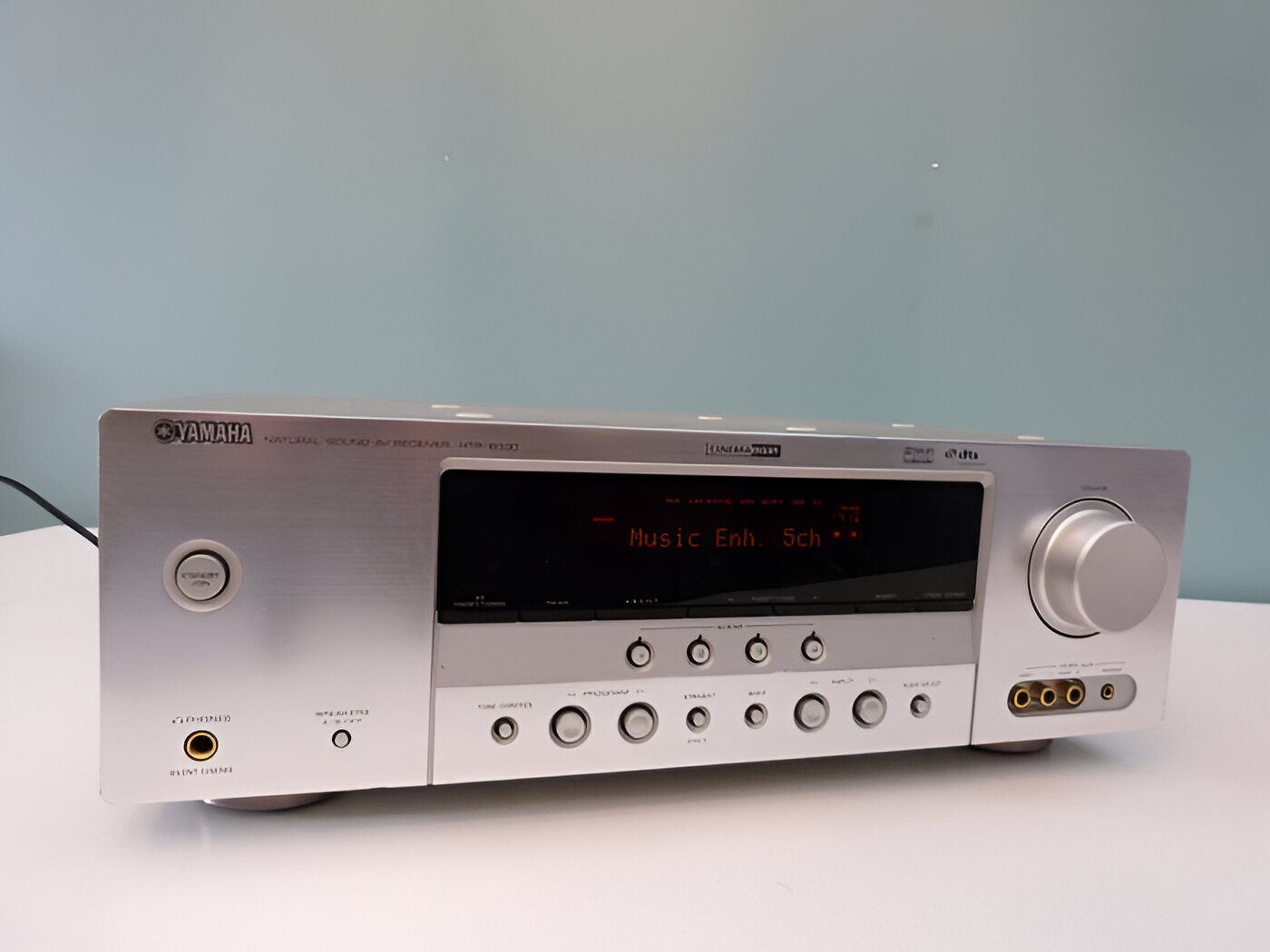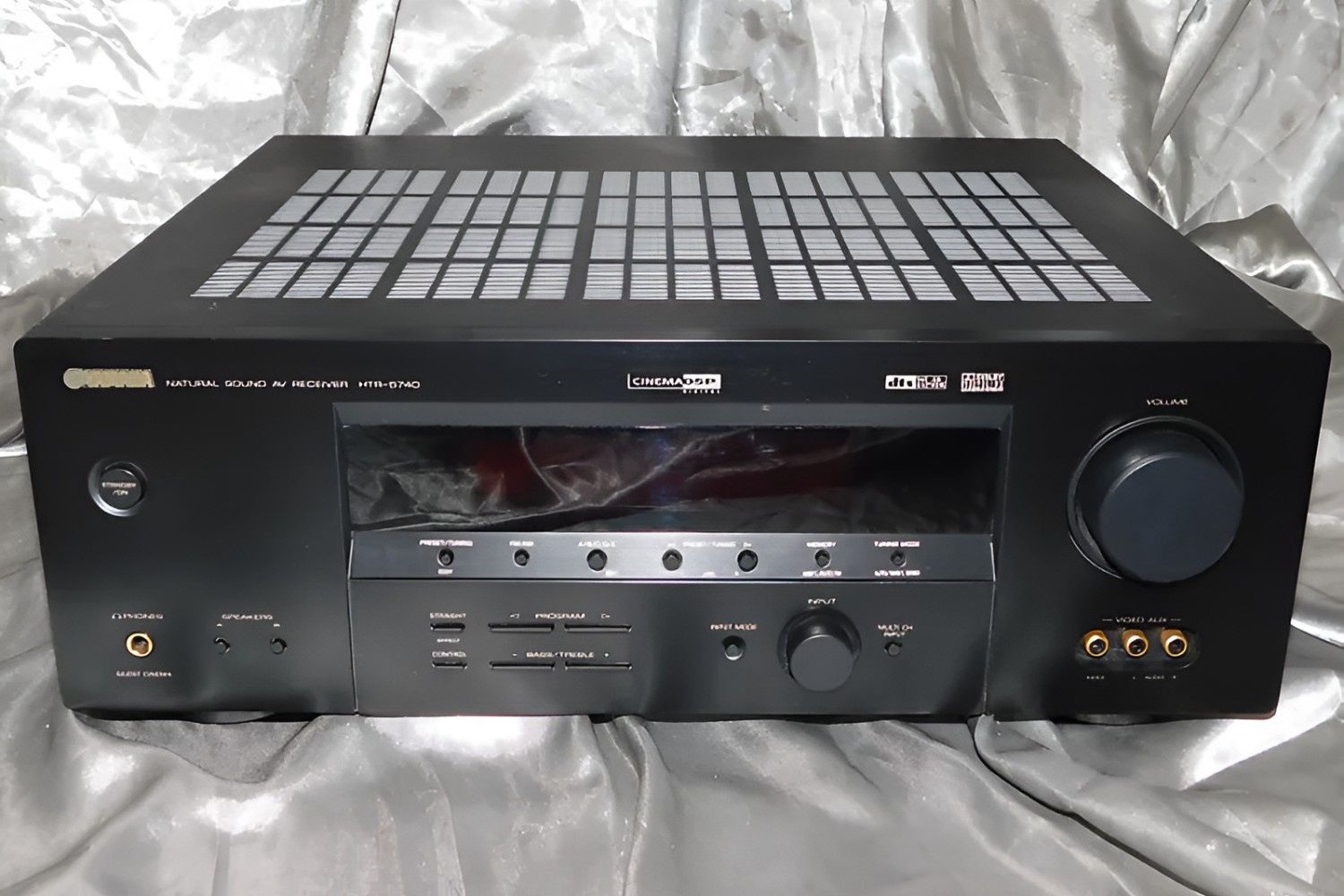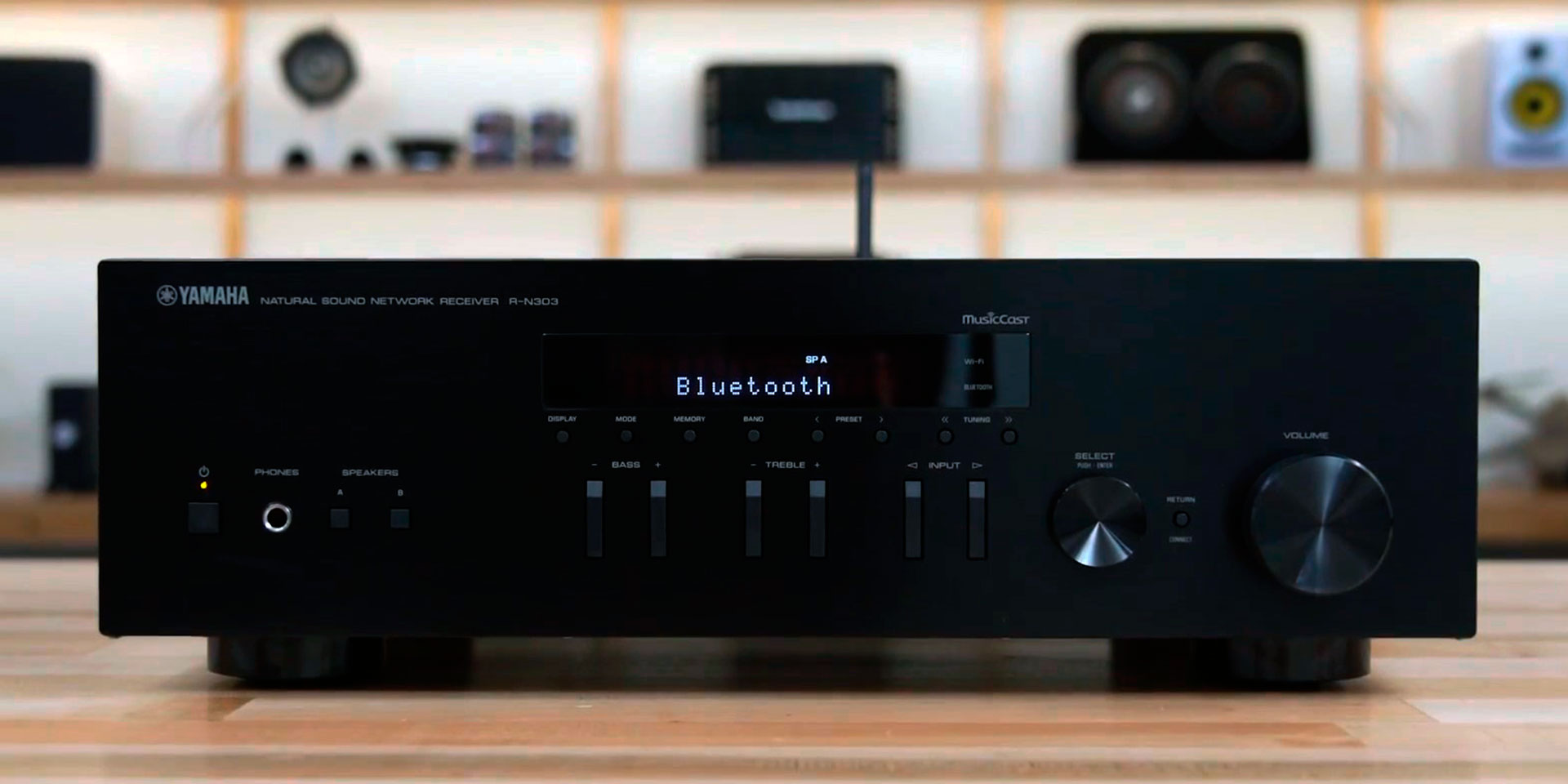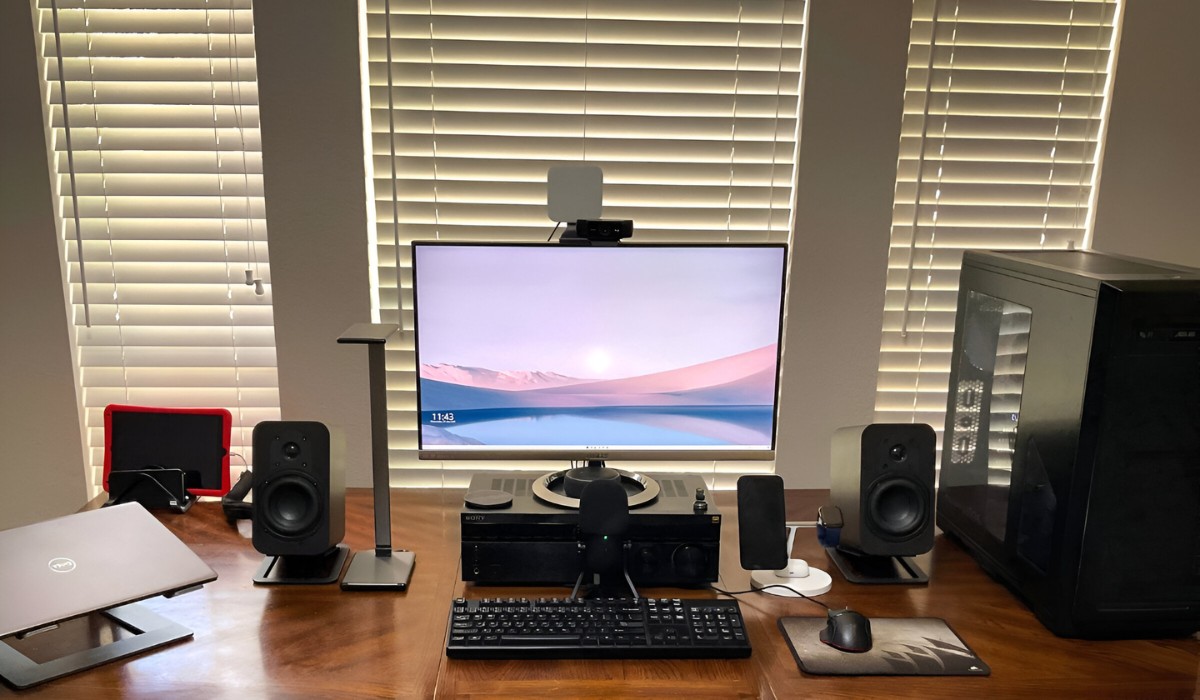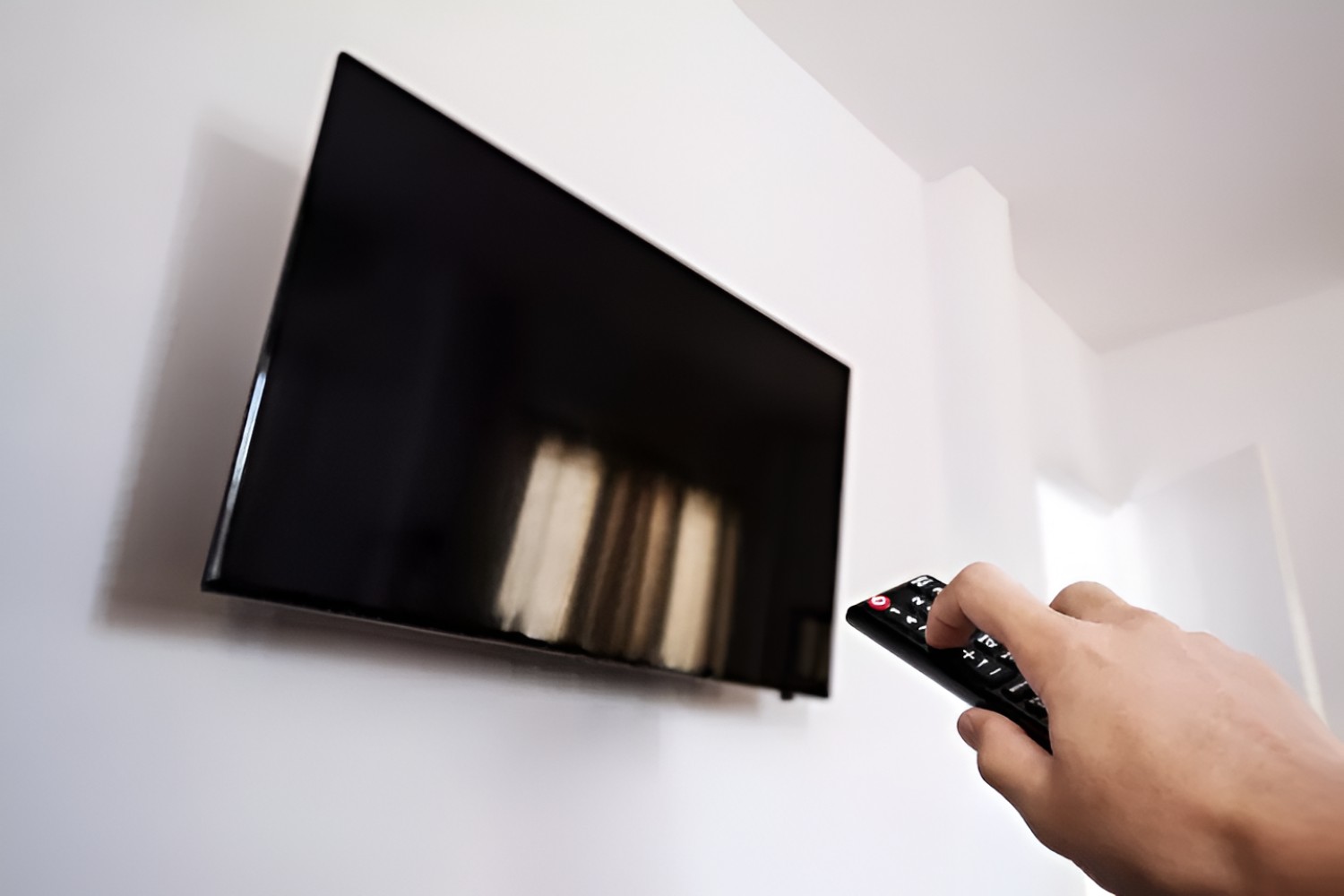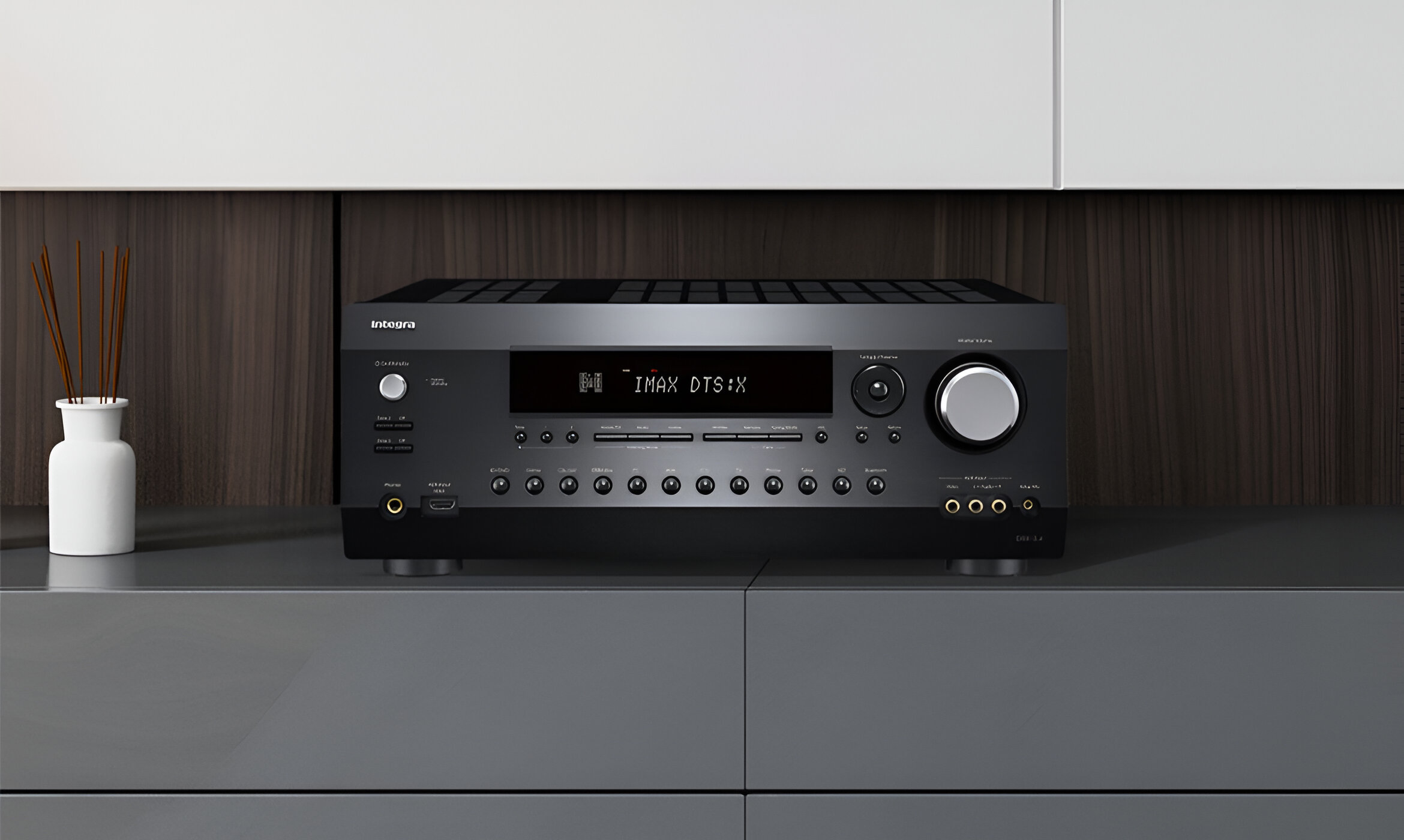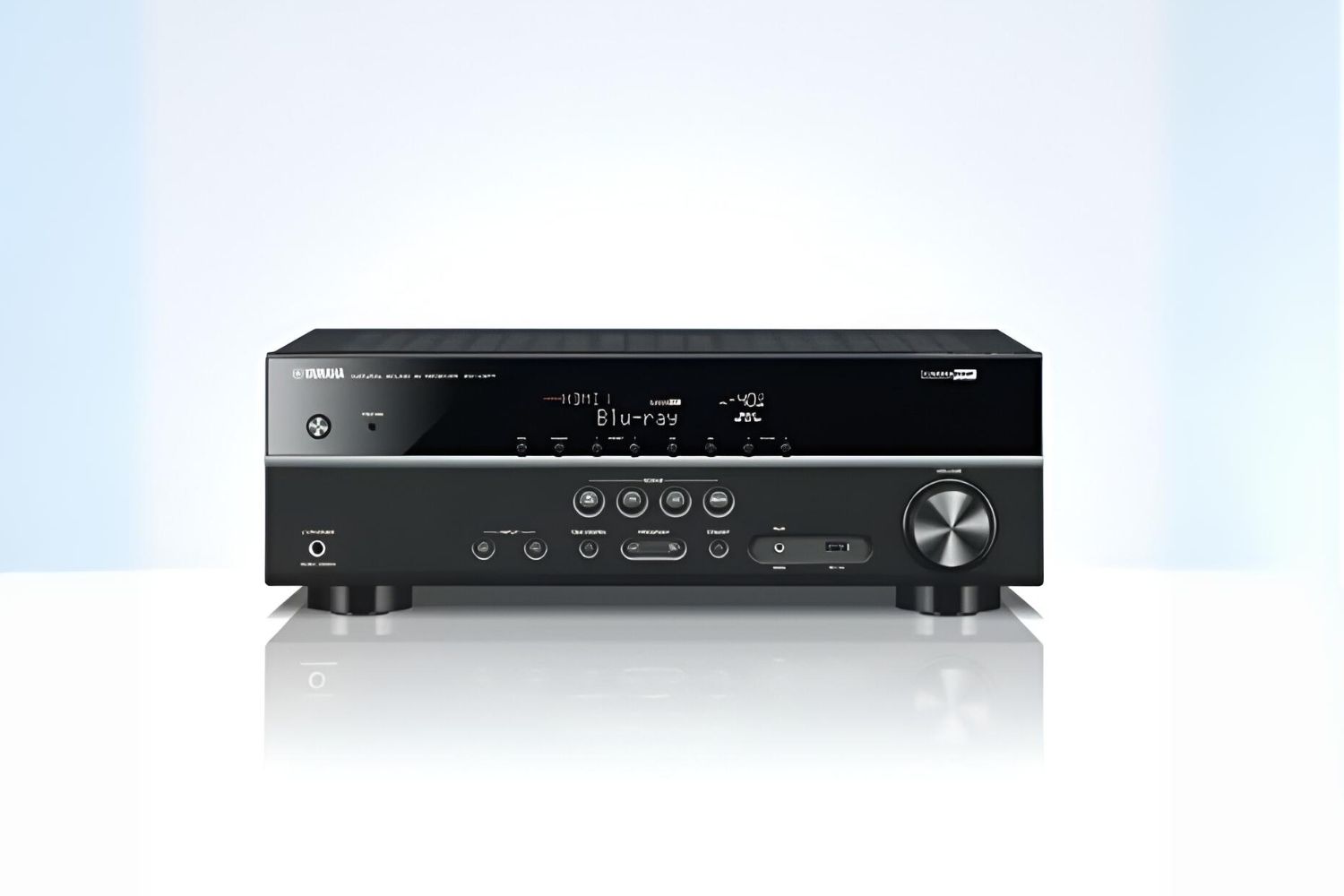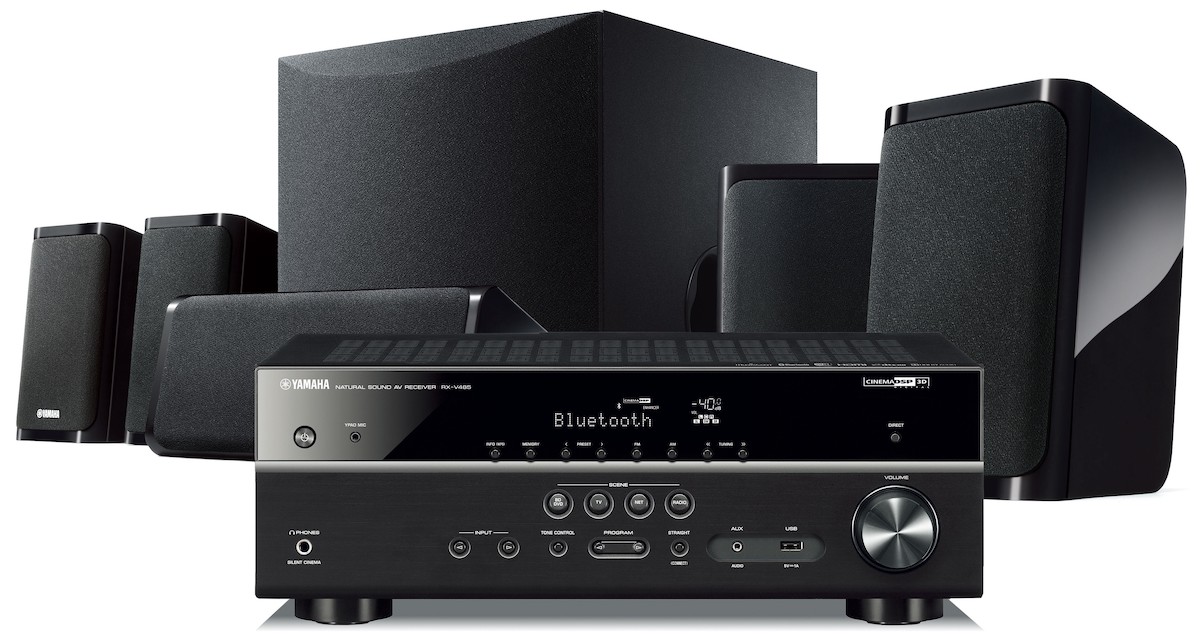Introduction
Introduction
Welcome to the world of high-quality audio and immersive home entertainment with the Yamaha Natural Sound AV Receiver HTR-5840. Setting up your AV receiver can seem daunting at first, but with the right guidance, you can unlock its full potential and enjoy a truly cinematic experience in the comfort of your own home.
In this comprehensive guide, we will walk you through the step-by-step process of setting up your Yamaha HTR-5840 AV receiver, from unboxing to troubleshooting. Whether you're a seasoned audiophile or a newcomer to the world of home theater systems, this guide will provide you with the knowledge and confidence to optimize your AV receiver for unparalleled audio and video performance.
By the end of this guide, you will have a deep understanding of how to connect and configure your AV receiver, set up your speakers for optimal sound distribution, and fine-tune the audio and video settings to suit your preferences. Additionally, we will cover essential troubleshooting tips to address common issues and ensure that your AV receiver operates seamlessly.
So, without further ado, let's embark on this journey to unleash the full potential of your Yamaha Natural Sound AV Receiver HTR-5840. Get ready to elevate your home entertainment experience to new heights with immersive sound and stunning visuals that only a high-quality AV receiver can deliver.
Unboxing and Checking the Contents
Unboxing and Checking the Contents
Upon receiving your Yamaha Natural Sound AV Receiver HTR-5840, the excitement of unboxing and setting up this powerful audio-visual centerpiece begins. Before delving into the setup process, it’s crucial to ensure that all the necessary components are present and in pristine condition.
As you unbox your Yamaha HTR-5840, you will typically find the following items included:
- Yamaha Natural Sound AV Receiver HTR-5840
- Remote control
- FM antenna
- AM loop antenna
- AC power cord
- Owner’s manual
Before proceeding, carefully inspect each item to confirm that no damage occurred during transit. Ensure that the accessories, such as the remote control and antennas, are free from any physical defects. The owner’s manual will serve as your comprehensive guide throughout the setup process, so it’s essential to keep it readily accessible.
Take a moment to familiarize yourself with the layout of the receiver and its various input and output ports. This will provide a clear understanding of how the components will be interconnected during the setup process. Additionally, identify a suitable location for the receiver, considering factors such as ventilation, accessibility to power outlets, and proximity to your audio-visual sources.
By meticulously unboxing and checking the contents, you set the stage for a smooth and organized setup process. With all the components accounted for and in optimal condition, you are now ready to embark on the next steps of connecting and configuring your Yamaha HTR-5840 AV receiver.
Connecting the AV Receiver
Now that you have unboxed and checked the contents of your Yamaha Natural Sound AV Receiver HTR-5840, it’s time to proceed with the crucial step of connecting the receiver to your audio-visual components. This process involves establishing the necessary physical and electrical connections to ensure seamless integration with your home entertainment system.
Begin by identifying the optimal placement for your AV receiver, considering factors such as ventilation, accessibility to power outlets, and proximity to your audio and video sources. Once the placement is determined, connect the AC power cord to the receiver and plug it into a reliable power outlet. Ensure that the power outlet is easily accessible and can accommodate the power requirements of the AV receiver.
Next, connect your audio and video sources, such as Blu-ray players, gaming consoles, streaming devices, and cable/satellite boxes, to the corresponding input ports on the receiver. The Yamaha HTR-5840 is equipped with a variety of input options, including HDMI, optical, and analog audio connections, providing flexibility to accommodate a wide range of audio-visual devices.
When connecting the audio and video sources, pay close attention to the labeling of the input ports on the receiver to ensure accurate and secure connections. Utilize high-quality cables to minimize signal degradation and maximize the potential of your audio and video content. Additionally, consider utilizing HDMI cables for digital audio and video transmission, as they offer superior signal fidelity and support advanced audio formats.
As you establish the connections, take the time to organize and route the cables neatly to avoid clutter and tangling. This not only enhances the visual appeal of your setup but also facilitates easier troubleshooting and maintenance in the future. Once all the connections are in place, perform a thorough check to verify that each audio and video source is correctly linked to the corresponding input on the AV receiver.
By meticulously connecting the AV receiver to your audio-visual components, you lay the foundation for a cohesive and integrated home entertainment system. The next steps will involve setting up the speakers and configuring the audio and video inputs to harness the full potential of your Yamaha HTR-5840 AV receiver.
Setting Up the Speakers
With the Yamaha Natural Sound AV Receiver HTR-5840 now connected to your audio-visual sources, the next pivotal step is setting up the speakers to create an immersive and spatially balanced sound environment. Proper speaker placement and configuration are essential for delivering an authentic and captivating audio experience that complements the visual elements of your home entertainment setup.
Before positioning the speakers, carefully review the specifications and recommendations outlined in the owner’s manual provided with the Yamaha HTR-5840. This will provide valuable insights into the optimal placement of the speakers, including considerations for room size, acoustics, and the desired listening experience.
Identify the primary listening area within your space, as this will serve as the focal point for speaker placement. The front speakers, typically the left and right channels, should be positioned at equal distances from the primary listening area, forming an equilateral triangle with the listener. This arrangement helps create a balanced soundstage and enhances stereo imaging.
Place the center channel speaker either above or below the display screen, ensuring that it is aligned with the primary listening area. The center channel speaker plays a crucial role in reproducing dialogue and vocals with clarity, making its positioning pivotal for a cohesive audio-visual experience.
For the surround speakers, consider mounting them at ear level or slightly above, aiming towards the primary listening area. This placement facilitates enveloping sound effects and ambient audio, contributing to a more immersive viewing and listening experience during movies, TV shows, and gaming.
If your setup includes a subwoofer, experiment with its placement within the room to identify the position that delivers optimal bass response and integration with the other speakers. Subwoofers are often best placed along the front wall, in a corner, or equidistant from the primary listening area to achieve balanced low-frequency reproduction.
Once the speakers are positioned according to the guidelines and your room’s layout, proceed to connect each speaker to the corresponding speaker terminals on the AV receiver. Ensure that the polarity of the speaker connections is accurate, with the positive and negative terminals aligned to prevent phase cancellation and ensure coherent sound reproduction.
By meticulously setting up the speakers in accordance with the recommended guidelines, you establish the groundwork for a captivating audio experience that complements the visual prowess of your home entertainment system. With the speakers in place and connected, the next phase involves configuring the audio and video inputs to optimize the performance of your Yamaha HTR-5840 AV receiver.
Configuring the Audio and Video Inputs
As the foundational elements of your home entertainment system are in place, the time has come to fine-tune the audio and video inputs of your Yamaha Natural Sound AV Receiver HTR-5840. This crucial step involves configuring the receiver to recognize and optimize the audio and video signals from your connected sources, ensuring seamless playback and sonic fidelity.
Begin by accessing the setup menu on the AV receiver, typically accessible through the on-screen display or the front panel interface. Navigate to the input settings section, where you can assign and label each connected audio and video source. This step allows you to customize the input names, making it easier to identify and select the desired sources from the receiver’s interface.
When configuring the audio inputs, consider the specific characteristics of each source, such as the audio format, channel configuration, and dynamic range. The Yamaha HTR-5840 offers a range of audio processing options, including Dolby Digital, DTS, and various surround sound modes, allowing you to tailor the audio playback to suit your preferences and the content being enjoyed.
For video inputs, ensure that the resolution and color space settings are aligned with the capabilities of your display device, such as a television or projector. The receiver’s video processing capabilities, including upscaling and pass-through features, can significantly impact the visual quality, so it’s essential to configure these settings to achieve optimal video performance.
Utilize the built-in calibration and optimization tools provided with the Yamaha HTR-5840, such as YPAO (Yamaha Parametric Room Acoustic Optimizer), to analyze and adjust the audio output based on the acoustic characteristics of your listening environment. This automated calibration process optimizes the speaker settings, equalization, and channel levels to deliver balanced and accurate sound reproduction.
Explore the advanced audio and video settings available on the receiver to fine-tune the sonic characteristics and visual output according to your preferences. This may include adjusting the crossover frequencies for the speakers, enabling dynamic range control, and customizing the equalization to suit different genres of music and types of content.
Once the audio and video inputs are meticulously configured to align with your preferences and the capabilities of your audio-visual components, you are poised to experience the full potential of your Yamaha HTR-5840 AV receiver. With the setup and optimization complete, the next step involves tuning the receiver for optimal performance to ensure a captivating and immersive home entertainment experience.
Tuning the Receiver for Optimal Performance
With the foundational setup and configuration complete, the next pivotal phase in maximizing the potential of your Yamaha Natural Sound AV Receiver HTR-5840 involves tuning the receiver for optimal performance. This process encompasses fine-tuning the audio parameters, optimizing the speaker settings, and ensuring that the receiver is primed to deliver a captivating and immersive audio-visual experience.
Commence the tuning process by accessing the advanced audio settings on the receiver, where you can refine the sound characteristics to suit your preferences and the specific content being enjoyed. This may involve adjusting the equalization settings, fine-tuning the bass and treble levels, and customizing the surround sound processing to create a spacious and enveloping audio environment.
Utilize the receiver’s built-in test tones and calibration features to ensure that the speaker levels and distances are accurately configured. This step is crucial for achieving a balanced soundstage and seamless integration of the individual speakers, resulting in cohesive and accurate audio reproduction across the listening area.
Experiment with the various audio processing modes offered by the Yamaha HTR-5840, such as cinema DSP (Digital Sound Processing), to tailor the sound presentation to different genres of content. Whether you’re enjoying movies, music, or gaming, these processing modes can enhance the spatial imaging and sonic immersion, elevating the overall entertainment experience.
Consider engaging the dynamic range control and dialog enhancement features, if available, to ensure that quieter sounds are amplified and dialogue remains clear and intelligible, especially during low-volume listening. These settings contribute to a consistent and engaging audio experience across a wide range of content and listening scenarios.
For users who appreciate the intricacies of audio reproduction, explore the receiver’s options for configuring speaker crossover frequencies, phase alignment, and room acoustics compensation. These advanced settings allow for meticulous tailoring of the audio output to suit the acoustics of your listening environment and the sonic characteristics of your speakers.
Upon completing the tuning process, it’s beneficial to revisit the input settings and verify that the audio and video configurations align with the optimized performance parameters. This ensures that the receiver seamlessly integrates with your audio-visual sources, delivering a cohesive and refined entertainment experience.
By meticulously tuning the receiver for optimal performance, you unlock the full potential of your Yamaha HTR-5840 AV receiver, creating a captivating and immersive audio-visual environment that elevates your home entertainment experience to new heights. With the receiver finely tuned, the next phase involves testing and troubleshooting to address any potential issues and ensure seamless operation.
Testing and Troubleshooting
As you near the completion of setting up your Yamaha Natural Sound AV Receiver HTR-5840, it’s essential to conduct comprehensive testing to ensure that all components are functioning optimally. This phase also involves troubleshooting any potential issues that may arise, allowing you to address them proactively and maintain a seamless home entertainment experience.
Initiate the testing phase by playing a variety of audio and video content through your connected sources, such as Blu-ray players, gaming consoles, and streaming devices. Pay close attention to the audio quality, ensuring that the sound reproduction is immersive, balanced, and free from distortions or anomalies. Explore different genres of music, movie scenes, and gaming environments to gauge the receiver’s performance across diverse content types.
Verify that the video signals are transmitted seamlessly to your display device, confirming that the resolution, color fidelity, and visual clarity meet your expectations. Look for any artifacts, signal interruptions, or compatibility issues that may affect the visual presentation, addressing them promptly to maintain a high-quality viewing experience.
During the testing phase, assess the performance of the surround sound system by evaluating the spatial imaging, channel separation, and overall coherence of the audio reproduction. Engage in content that features dynamic soundscapes and directional audio cues to gauge the receiver’s ability to create an enveloping and immersive sonic environment.
Utilize the receiver’s remote control and on-screen display to navigate through the various audio and video settings, confirming that the configurations align with your preferences and the capabilities of your audio-visual components. Make any necessary adjustments to fine-tune the settings based on your testing observations, ensuring a tailored and optimized entertainment experience.
In the event of encountering any operational or performance issues during the testing phase, refer to the troubleshooting section of the owner’s manual for guidance. Common issues such as audio dropouts, video signal disruptions, or connectivity challenges can often be addressed through systematic troubleshooting steps outlined in the manual.
When troubleshooting, consider factors such as cable integrity, power supply stability, and compatibility between the receiver and connected devices. Verify that all connections are secure and that the firmware of the receiver is up to date, as manufacturers often release updates to address performance and compatibility issues.
By conducting thorough testing and proactive troubleshooting, you ensure that your Yamaha HTR-5840 AV receiver operates seamlessly, delivering a captivating and immersive home entertainment experience. With the testing and troubleshooting phase complete, you can confidently immerse yourself in a world of high-quality audio and stunning visuals, knowing that your AV receiver is optimized for peak performance.
Conclusion
Congratulations on successfully setting up and optimizing your Yamaha Natural Sound AV Receiver HTR-5840. Through the meticulous process of unboxing, connecting, configuring, and fine-tuning, you have unlocked the full potential of this powerful audio-visual centerpiece, paving the way for a truly immersive home entertainment experience.
By carefully unboxing and inspecting the contents, you ensured that all components were in optimal condition, setting the stage for a seamless setup process. Connecting the AV receiver to your audio-visual sources and setting up the speakers with precision allowed for the creation of a balanced and spatially immersive sound environment.
Configuring the audio and video inputs, along with tuning the receiver for optimal performance, provided the opportunity to tailor the audio-visual characteristics to suit your preferences and the capabilities of your home entertainment system. The attention to detail in these phases has undoubtedly enhanced the sonic and visual fidelity of your setup.
Thorough testing and proactive troubleshooting have further solidified the reliability and performance of your Yamaha HTR-5840 AV receiver, ensuring that any potential issues were addressed promptly and comprehensively. This meticulous approach has laid the foundation for a seamless and captivating home entertainment experience.
As you embark on your journey of immersive audio and stunning visuals, remember that the setup and optimization process is not merely a one-time task but an ongoing opportunity to explore and refine the capabilities of your AV receiver. Whether you’re enjoying blockbuster movies, immersive gaming experiences, or the nuances of high-fidelity music, your Yamaha HTR-5840 is poised to deliver a captivating and enveloping audio-visual journey.
With your AV receiver finely tuned and optimized, you can now revel in the seamless integration of high-quality audio and stunning visuals, enveloping yourself in the captivating world of home entertainment. The meticulous setup and optimization process have empowered you to explore the full potential of your Yamaha HTR-5840, elevating your home entertainment experience to new heights.







